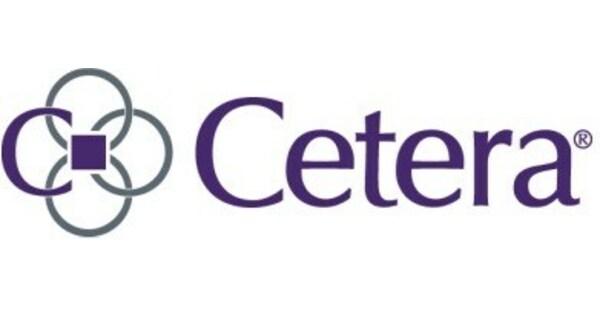[ad_1]
Financial therapy is an emerging field that sits at the intersection of mental health and personal finance. According to the Financial Therapy Association it is “A process informed by both therapeutic and financial competencies that helps people think, feel, communicate, and behave differently with money to improve overall well-being through evidence-based practices and interventions.”
While organizations such as the Financial Therapy Association seek to standardize the practice of financial therapy, it is an unregulated practice which leads to a lot of confusion around who can call themselves a financial therapist and what a financial therapist is.
What A Financial Therapist Is, And Isn’t
“There are lots of different types of professionals working under the umbrella, including mental health practitioners, financial planners, financial coaches, and others,” according to Nathan Astle, Licensed Marriage and Family Therapist and Certified Financial Therapist™. “ There is a valid concern that we need to ‘protect the public’ from a misrepresentation of what our field does. It would be unethical if a financial professional called themselves a financial therapist without being forthcoming about their lack of training in diagnosis and other traditional therapy treatment modalities. Conversely, it would be unethical for a mental health practitioner to offer investment advice under the name of a financial therapist if they don’t have expertise in that area as well,” Astle says.
An individual can hold designations in mental health, finance, or neither while practicing financial therapy, however a financial therapist is not exclusively:
- A Certified Financial Planner;
- A Licensed Mental Health Therapist;
- An Accredited Financial Counselor;
- Or a Financial Coach.
Astle shares that “Educating the public about our services and skills will always be an ethical duty of a professional working in this cross-disciplinary field. However, I believe in our zealousness to define ourselves, we may get too territorial about titles and push people out of our field that may well belong there. If you are working with a financial therapist, it is important to ask them their background and where their expertise ends. An ethical financial therapist should be able to tell you that.”
‘Therapy’ Can Be Triggering
Communities of color may be averse to seeking out financial therapy because of what the word therapy implies. While there might be a certain level of gatekeeping that occurs on the part of mental health therapists around protecting the public, there are cultural nuances at play that can act as a barrier between a justified resistance to traditional forms of therapy and exploring financial therapy as a means to holistic financial wellness. “The cultural lens is important for both the client and the practitioner and can’t be understated,” says Steven M. Hughes, Financial Therapist & Reiki Master. While practitioners and academics debate who and what qualifies someone to call themselves a financial therapist, it’s important to maintain a focus on what kind of healing the discipline provides for people. “As the field of financial therapy grows and we continue to define ourselves, let’s make sure we aren’t so focused on titles that we forget the end goal. Helping people experience themselves and their money differently,” says Astle.
Inclusivity In Financial Therapy
Coworkers with stacked hands at the office
getty
Some communities knowingly or unknowingly practice a communal form of talk therapy via ritualistic gatherings. Those gatherings might include places like a gym, barbershop or hair salon, or religious worship center.
In making a case for alternative forms of healing, Hughes states that “training or experience to provide the right resources for someone who needs help is important despite maybe not having a need for a license. Reiki for example exists outside of a traditional method of therapy but it is something you can get trained and attuned in to help a client.” Hughes practices a unique form of financial therapy that integrates Reiki and provides tools that support his clients in guiding them to holistic wellness.
Cultural competence is another important aspect of financial therapy as the field seeks to expand and provide greater access to underserved communities. Aja Evans, a Licensed Mental Health Counselor and Financial Therapist says that the role of cultural competence in financial therapy is extremely important because she’s found it’s important to be relatable to her clients.
“These are real issues people are dealing with that are complex and emotional. It’s important for me to understand the nuances of what it means for somebody to show up in their lives walking in their identities, as well as who I show up as in my own identities and how those two may mix together. It’s important to have an understanding of who you are, where you come from, as well as where your clients may come from,” Evans says. Evans takes a holistic approach to people and the realities of dealing with the systems of our country.
Should You Become A Financial Therapist?
Well, it depends.
While there are specific criteria to become a Certified Financial Therapist (CFT-I™), the term financial therapy and somebody practicing financial therapy looks different according to Evans. There are many coaches and financial professionals who are doing financial therapy that may not be coming from a mental health background.
Individuals wanting to explore financial therapy should examine their educational background in both personal finance and mental health as well as their overall intent with using the title. Hughes cautions financial professionals against adding financial therapy to their suite of services if the intent is just to get eyes on their product or service. “It’s detrimental to people who need financial help if you aren’t actually doing the work,” he says.
This caution comes from the trend within the industry where well known organizations swap out the wording on their websites to say financial wellness instead of financial literacy when the education, experience, and resources remain the same. It becomes dangerous because people outside of the industry can get confused in trying to decipher between someone offering financial education and someone who offers a financial wellness solution.
Hughes shares, “Everybody isn’t here for holistic wellness, some of them are here for a money grab and they see financial wellness as a top request or benefit because of the amount of financial stress that people are going through right now and they’re trying to get some of that money.”
[ad_2]
Source link



